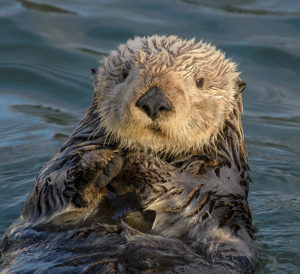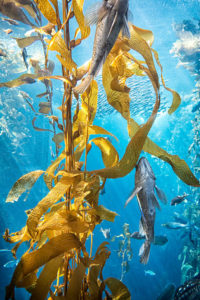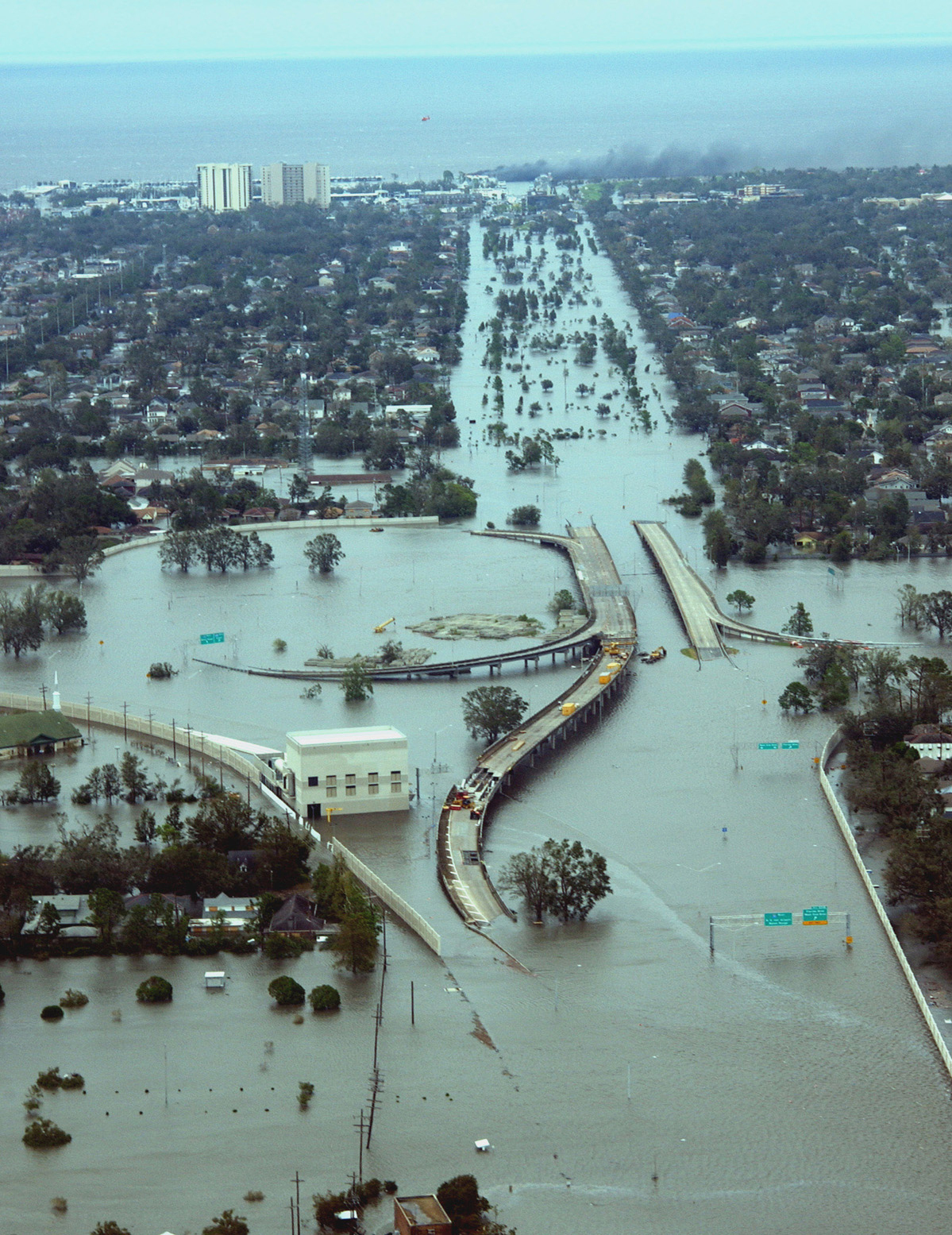Gregr, E. J., Christensen, V., Nichol, L., Martone, R. G., Markel, R. W., Watson, J. C., … Chan, K. M. A. (2020). Cascading social-ecological costs and benefits triggered by a recovering keystone predator. Science, 1247, 1243–1247. https://doi.org/10.1126/science.aay5342
Predators get a bad rap. They are often portrayed as big, bad, scary, eating-machines. But the fact is, predators play a crucial role in keeping the ecosystem functioning properly. When they are removed from an area, there are drastic trickle-down effects that can impact everything from the types of plants and animals present to the overall landscape in an area!

We call species that play a particularly strong role in balancing ecosystem functions “keystone species.” Just like the keystone in an archway, keystone species are essential to keeping all of the other players in the ecosystem in check, thereby upholding the integrity of the entire ecosystem.
The decline of a coastal predator
Sea otters are the textbook example of a keystone species. Prized for their warm and soft fur, sea otters were hunted to the brink of extinction in the 18th and 19th centuries. The sea otter populations that once ranged from Japan to Baja California had been decimated by early 1900. Only handful remained, including one population of around 50 individuals off the coast of Big Sur, California. In 1911, an international treaty was signed protecting sea otters from hunting, and in 1972, sea otters became protected under the United States Marine Mammal Protection Act.
As sea otter populations grew, the oceanic landscape changed around them. Dr. James Estes studied these changes by comparing areas where sea otter populations were rebounding to areas where they were not. The differences were astounding. Sea otters are voracious predators of invertebrates like sea urchins and shellfish. In locations without sea otters, these invertebrates had prospered – so much so that their populations were running amuck. Unhindered by sea otter predation, sea urchins were devouring the giant kelp forests that defined the landscape of the area. In stark contrast to these sea urchin-induced deserts, areas inhabited by sea otters were thriving: healthy kelp forests provided structure and habitat for the fish and other animals in the ecosystem. In fact, Dr. Estes concluded that “every species in the coastal zone is influenced in one way or another by the ecological effects of sea otters”.

The fact that sea otters uphold the health and balance in kelp forests has generated support for conservation efforts, but the reintroduction of the invertebrate predators has also caused some friction with fishermen and coastal communities dependent on the species sea otters eat. A new study, led by Dr. Edward J. Gregr, quantified the costs and benefits associated with sea otter reintroduction into coastal areas. The researchers were able to examine areas in Canada where sea otters have been gradually recolonizing their historical stomping grounds. By comparing areas with sea otters to those that have not yet been recolonized, the team was able to estimate the trickle-down effects of sea otter reintroduction and what those might mean for the area’s economy and society.
A shift from shellfish to finfish
By promoting overall ecosystem health, sea otters increased the total number of animals in the ecosystem by roughly 37%, also increasing the total catch of fisheries in the area. While the researchers estimate that finfish fisheries – like rockfish and lingcod – will increase catches by around $9.4 million Canadian (~$6.9 million USD) annually, invertebrate fisheries – including crabs, clams, and sea urchins – lose $7.3 million Canadian (~$5.3 million USD) each year because a sea otter’s diet competes with human invertebrate fisheries. Even as fisheries yields increase overall, local communities and fisheries may need to adapt their fishing practices or switch their target species in order to cope with the ecological changes brought about by sea otters. For instance, Dungeness crab fisheries may be able to continue if they can fish in deeper waters or in areas outside of sea otters’ range; however, these shifts may be too expensive or inaccessible to coastal communities.
Saving the ecosystem saves the economy
The researchers also examined other cultural and economic factors that might be impacted by sea otters. For instance, healthy kelp forest ecosystems are a powerful carbon storage reservoir, absorbing and storing carbon dioxide from the atmosphere at a rate that is equivalent to around $2.2 million Canadian (~$1.61 million USD) annually. By far the largest economic impact sea otters appear to have on the coast economy, however, is in their ability to generate tourism revenue. The researchers estimate that areas with healthy sea otter populations could increase tourism revenue by $41.5 million Canadian (~$30.41 million USD) every year from people wanting to visit areas with the charismatic sea otters. Their estimate did not include estimates of revenue from other tourism sectors that are likely indirectly benefited by the presence of a healthy kelp forest, such as increases in recreational fishing and diving revenue.

Can coastal communities adapt to the presence of a predator?
Sea otters increase biodiversity and improve the health of coastal ecosystems. Their presence in the area has cascading effects that can increase the economic revenue gained from these ecosystems through increases to finfish yields, improved carbon sequestration, and the promotion of tourism. Nevertheless, the changes to the ecosystem impact surrounding coastal populations who have become used to living in invertebrate-dominated systems without sea otters. As coastal resources shift (either in species composition or in their general distribution), coastal communities are faced with the difficult task of adjusting their way of life. While large commercial fisheries may be able to rise to the challenge, recreational harvesters and Indigenous peoples may suffer if they cannot readily adapt.
While the return of sea otters is considered a major ecological win and can benefit local economies, the shifting landscape can also result in conflicts with local communities. Managers, governments and conservation groups will need to work together to avoid disproportionate economic loses in small communities and for Indigenous peoples and to mitigate potential conflicts between humans and sea otters that can result in illegal sea otter killings. As with almost everything in life, there are costs and benefits associated with sea otter conservation. Understanding how and what those are will ultimately improve the management of the species and kelp forest ecosystems.
I received my Master’s degree from the University of Rhode Island where I studied the sensory biology of deep-sea fishes. I am fascinated by the amazing animals living in our oceans and love exploring their habitats in any way I can, whether it is by SCUBA diving in coral reefs or using a Remotely Operated Vehicle to see the deepest parts of our oceans.


